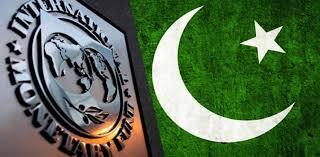Subtitle: With $1 Billion more from the IMF and another $1.4 Billion lined up for climate initiatives, Pakistan has money again—until it doesn’t.
📅 Published: May 10, 2025
✍️ By EduInvesting Bureau
While most of us are worried about our mutual fund NAVs or wondering why our SIPs haven’t made us rich yet, Pakistan just received a cool $1 billion from the International Monetary Fund (IMF). No lottery ticket, no Shark Tank pitch—just good old global lending diplomacy.
This generous disbursement comes under the IMF’s Extended Fund Facility (EFF), part of a broader $7 billion program. It’s the economic equivalent of your rich uncle helping you out again—with the same stern warning: “Don’t blow it this time.”
Let’s break it down like a cricket match postmortem.
🧾 What’s the Deal?
On May 9, 2025, the IMF gave the green signal to Pakistan’s first review of the EFF arrangement, which began in September 2024. With this approval:
- 🏦 $1 Billion has been transferred to Pakistan’s account.
- 💰 Total IMF funding under this package now stands at $2 billion.
- 🌱 On top of this, a separate $1.4 billion has been approved under the Resilience and Sustainability Facility (RSF)—yes, that’s a real thing—for climate resilience projects.
The goal? Stabilize Pakistan’s crumbling economy, avoid default, and make sure there’s still money to buy chai.
📉
The Mess Behind the Money
So why does Pakistan keep knocking on IMF’s door like it’s a sugar daddy? Here’s the backdrop:
- Inflation? Check. Double-digit, painful, grocery-bill-extending inflation.
- Currency depreciation? Check. The Pakistani Rupee has been sliding faster than your crypto investments.
- Low forex reserves? Oh yes. At one point, Pakistan had just enough reserves to pay for 3 weeks of imports.
And just like your friend who always says “last time, I swear,” Pakistan’s tryst with the IMF is now on its 23rd bailout since independence.
🎯 Conditions Apply* (*Small Print, Huge Impact)
IMF isn’t a benevolent NGO handing out free lunch. Their loans come with enough strings attached to hang an entire nation’s budget. Some of the “conditionalities” include:
1. Tax Reforms (Aka: No More Free Riders)
Pakistan must widen its tax net, especially targeting sectors like agriculture that have historically been tax-exempt. It’s like asking billionaires to pay tax in India—ambitious but unlikely.
2. Energy Sector Cleanup
The IMF wants energy subsidies reduced and the power sector made profitable. In other words, “stop giving people free electricity and then

